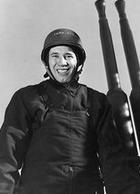Bob Feller
Hall of Famers at War
| Date and Place of Birth: | November 3, 1918 Van Meter, IA |
| Date and Place of Death: | December 15, 2010 Cleveland, OH |
| Baseball Experience: | Hall of Fame |
| Position: | Pitcher |
| Rank: | Chief Specialist |
| Military Unit: | US Navy |
| Area Served: | North Atlantic and Pacific |
“We have been in about every 'hellhole' on the face of the
earth. My present set-up has me in anti-aircraft gunnery, which at
present is quite active.”
Bob Feller in a letter to Lew Fonseca, American League Director of
Promotions 1944
Robert W. A. “Bob” Feller was born on November 3, 1918, in Van Meter,
Iowa. He played four years of American Legion baseball and was signed to
a Cleveland Indians’ contract by C. C. Slapnicka in July 1935, when only
16 years old.
During his first major league start in 1936, Feller faced the St. Louis
Browns and struck out 15. He won 24 games in 1939, and became the first
American League pitcher to throw a complete game no-hitter on opening
day 1940.
On December 8, 1941 – the day after the Japanese attack on Pearl Harbor
- Feller enlisted in the Navy. He was sworn in by former heavyweight
boxing champion, Gene Tunney, at the Chicago courthouse. He was assigned
to the Norfolk Naval Training Station in Virginia, as part of Tunney’s
physical fitness program, and pitched for the baseball team. The line-up
included Freddie Hutchinson and Vince Smith, and Feller hurled his first
game for Norfolk on April 3, 1942, against Richmond University. In three
innings he struck out three and allowed one hit. Norfolk won the game,
13-1.
On June 15, 1942, Feller participated in a five-inning baseball game at
the Polo Grounds, New York, as part of an all-sports carnival to raise
funds for Army-Navy Relief. Feller pitched the Navy team to victory
against the Army’s Hugh Mulcahy - allowing three hits and striking out
five. But Feller was not happy. “I wanted to get out of the Tunney
program and in to combat,” he told author William B Mead. “So I went to
the gunnery school there. And I went on the USS Alabama that fall.”
Feller then spent 26 months as chief of an anti-aircraft gun crew on the
USS Alabama (BB-60), a South Dakota-class battleship. “We spent the
first six or eight months in the North Atlantic. I was playing softball
in Iceland in the spring. We came back in the later part of the summer,
and went right through the Panama Canal and over to the South Pacific.
We hung around the Fiji islands for a while, and then when we got the
fleet assembled, and enough men and equipment to start a successful
attack, we hit Kwajalein and the Gilberts and the Marshalls and then
across to Truk.”
Feller worked hard to stay in top physical shape while on the Alabama.
He had a rowing machine and a punching bag, and did regular chin-ups and
push-ups. He would run on beaches whenever the ship was in port and run
around the ship when at sea.
Early in 1944, Feller was contacted by Seabee Albert P Pellicore of
Chicago, who asked him to play a game against a team composed of the
best players on an island in the Pacific. "Bob was in rare form that
day." Pellicore explained in a letter to John P Carmichael, sports
editor of the Chicago Daily News, "and pitched exceedingly fine to the
delight of the largest crowd ever assembled in these parts." The
"All-Stars." playing against Bob, lost the game 9-0, with Feller
striking out 15. "I write this because I feel the people back home
should know about a man who besides his regular line of duty is
contributing so much toward the entertainment of all concerned," the
letter concluded.
The USS Alabama returned to the United States in the spring of 1945, and
Feller was assigned to the Great Lakes Naval Training Center in
Illinois, where he coached the baseball team and posted a 13-2 won-loss
record with 130 strike outs in 95 innings.
He returned to the Indians in August 1945, and in his debut in Cleveland
he beat the Tigers, 4-2, in front 46,477 adoring fans. In January 1946,
Feller set up a three-week school in Tampa, Florida, to develop the
baseball skills of returning veterans – both aspiring ballplayers and
those with some organized baseball experience. Men paid for their own
transportation to the school as well as room and board, but the
instruction – by major leaguers – was free.
In 1946, he set a major league record for the most strikeouts in one
season with 348. He led the American League in strikeouts for 7 years
and by 1951 had hurled his third no-hitter. His last season in the major
leagues was 1956, and Feller was elected to the Baseball Hall of Fame in
1962.
Talking about his military service some years later on an episode of
ESPN's Major League Baseball Magazine, Feller said "I'm very proud of my
war record, just like my baseball record. I would never have been able
to face anybody and talk about my baseball record if I hadn't spent time
in the service."
Not one to be phased by modern technology, Feller participated in an
online chat with fans from Cooperstown in April 2005. One of the many
questions he was asked was whether he had any regrets about serving in
the war? "No, I don't," he replied. "During a war like World War II,
when we had all those men lose their lives, sports was very
insignificant. I have no regrets. The only win I wanted was to win World
War II. This country is what it is today because of our victory in that
war.
Bob Feller participated in the salute to baseball in World War II
entitled Duty, Honor, Country: When Baseball Went to War on November 9 –
11, 2007 at the National WWII Museum in New Orleans. In August 2010,
Feller was treated for leukemia. In October, he had a pacemaker
installed and was diagnosed with pneumonia. In December he was
transferred to hospice care where he died on December 15, 2010, aged 92.
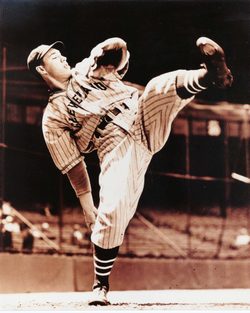
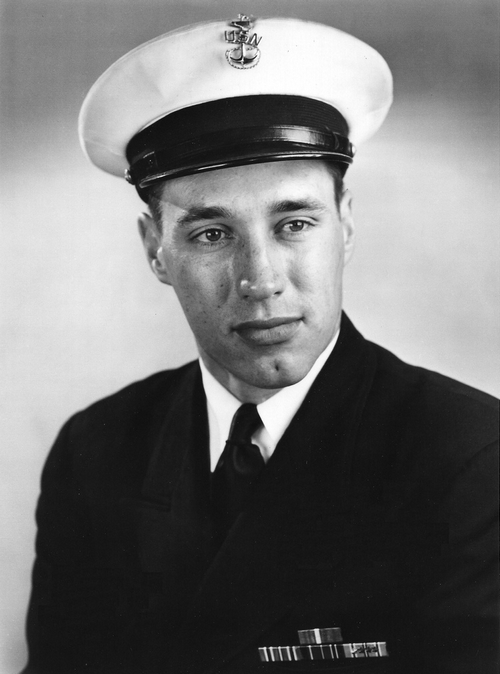
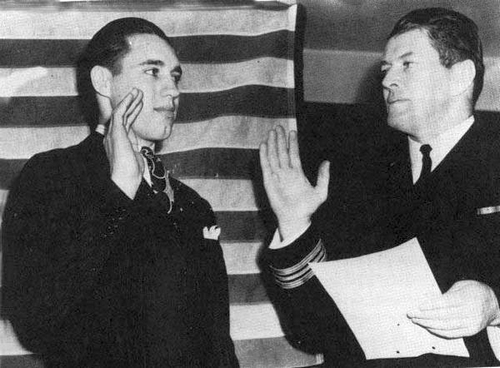
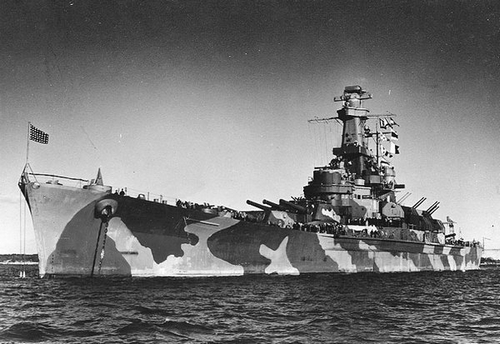
Date Added July 26, 2016
Bob Feller at Baseball-Almanac
Can you add more information to this biography and help make it the best online resource for this player? Contact us by email
Read Baseball's Greatest Sacrifice Through The Years - an online year-by-year account of military related deaths of ballplayers
Baseball's Greatest Sacrifice is associated with Baseball Almanac
Baseball's Greatest Sacrifice is proud to be sponsored by

